Yes! Your homemade black beans are going to look completely different from canned beans. And don’t get me wrong—any bean is a good bean! But when you make homemade black beans the Costa Rican way, you’ll taste rich flavor in every single spoonful. The aroma of beans simmering with garlic, onions, and herbs will fill your kitchen, and the taste is deep, earthy, and comforting.
And when you pair them with freshly made white rice (check out the recipe here), it’s the perfect combo—like Batman and Robin. You really can’t have one without the other.
Watch video here Black Beans Recipe
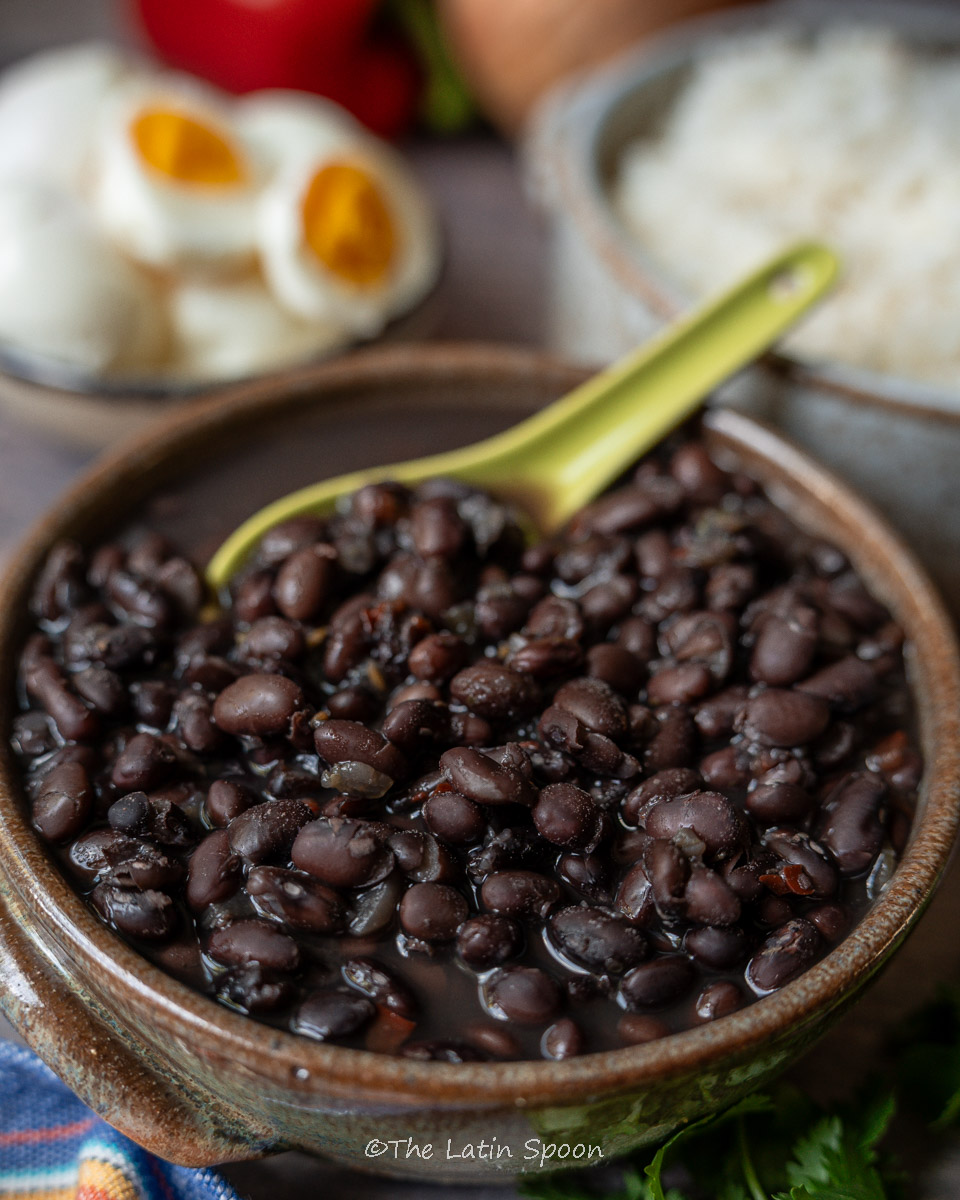
In Costa Rica, black beans aren’t just another side dish—they’re part of our identity and culture much like Gallo Pinto. They became a staple of our cuisine not only because they’re versatile and delicious, but also because they’re packed with fiber, protein, and nutrients, while being affordable for everyone.
Long before modern science explained that combining rice and beans creates a complete protein, my ancestors were already enjoying this mixture every single day. It kept them healthy, strong, and—if I may say—pretty good-looking too (after all, where else would I get the genes to be this cute?).
How to Make Costa Rican Black Beans at Home
I learned how to make beans in the pressure cooker a couple of decades ago, and I still remember the whistle blowing like crazy. My mom would always say, “As soon as it starts whistling, start counting—20 minutes if the beans were soaked, 45 if not. And don’t even think about opening the lid until the whistle stops!” Of course, we couldn’t have opened it even if we tried. She’d give us these instructions, rush out the door to visit a client, and leave me and my sisters in charge of making dinner that night.
But now… let me tell you about today. Ever since I discovered the Instant Pot, my life completely changed. I can actually sit back and relax—or even hear the TV in the next room—while my beans cook with no pressure (pun intended!).
Anyway, you can cook your beans in an Instant Pot, a traditional pressure cooker, or even a regular pot on the stove. The cooking time will vary depending on the gadget you’re using, but if you follow my magic formula for Costa Rican black beans, you’ll get the same delicious result. Here are the ingredients I use.
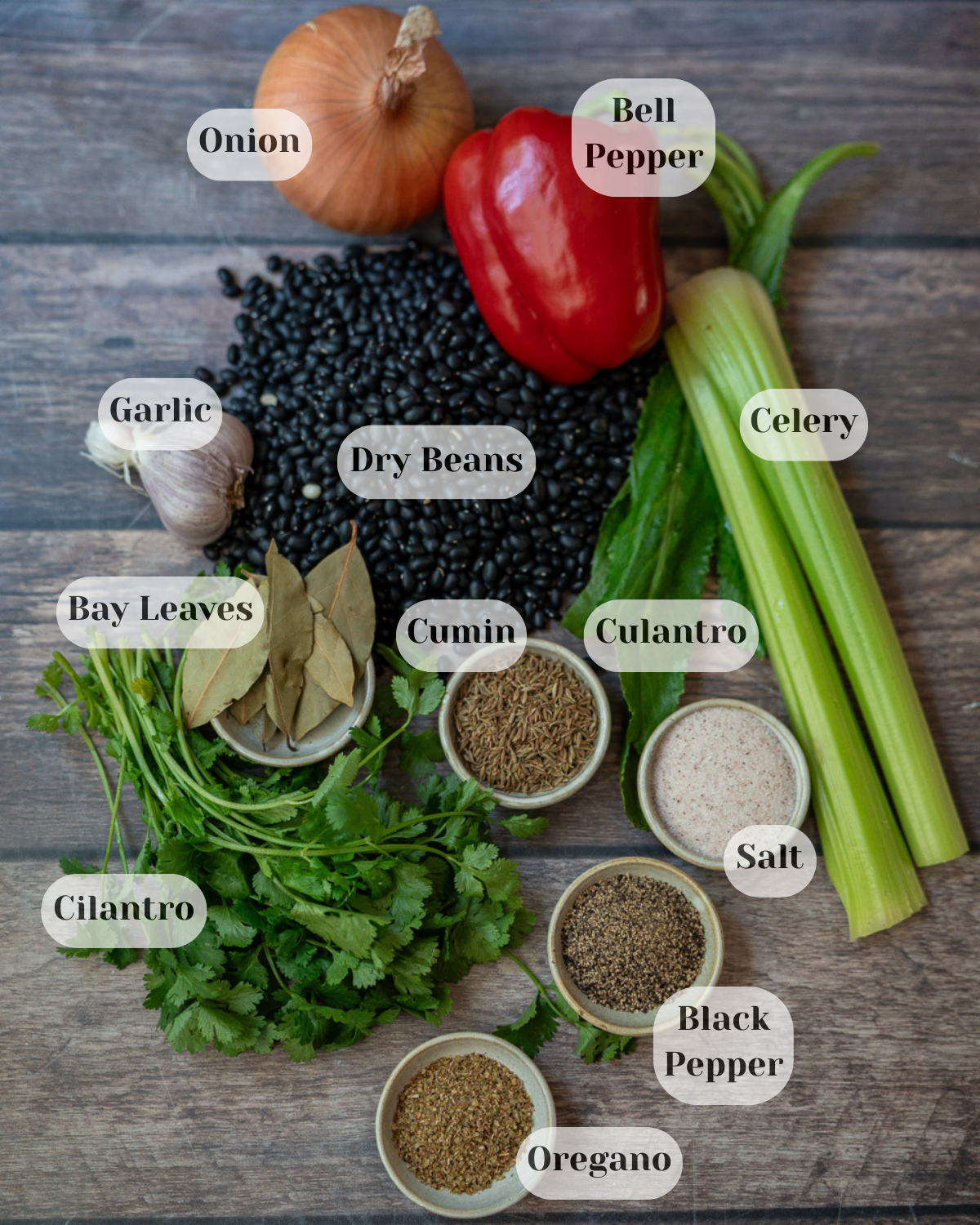
Ingredients for Costa Rican Black Beans
🌱 Black Beans
I’m using black beans because, well, that’s the name of the recipe! But you could also make this with red beans, pinto beans, garbanzo (chickpeas), or even white beans—basically any type of legume. Black beans are a great source of fiber, protein, and nutrients. They’re also incredibly versatile, pair well with lots of dishes, and are very affordable.
Check the FAQs below for tips on soaking your beans—or whether you need to soak them at all.
🧅 Onions, Peppers, Garlic and celery
These three ingredients are the base of almost any Latin dish (I’d say at least 95% of them!). I like to dice them into small pieces so I can enjoy a bit in every spoonful of beans. Some people prefer adding them whole and removing them after cooking—this way you still get the aroma, flavor, and nutrients, but without eating the actual pieces. So really, you’ve got two options for how to add yours.
🌿 Fresh and Dried Herbs
Herbs are also a big staple in Latin cuisine, whether fresh or dried. For this recipe, I’m using culantro Castilla (the name used in Costa Rica, but it’s basically the same cilantro you’ll find in any supermarket) and culantro coyote (literally “wolf culantro”). In Costa Rica, we don’t call it cilantro—we’re special like that 😄. You can usually find culantro coyote in Mexican or Asian stores, sold under the name culantro or culantro ancho. Both types of culantro add incredible flavor to the beans. I’m also adding dried bay leaves for even more depth.
🧄Spices
For this recipe I’m using cumin seeds (you can substitute with ground cumin), black pepper, and dried oregano. These spices add warmth, depth, and balance to the beans. Feel free to play around—swap oregano for thyme, add chili flakes for a little heat, or even a pinch of smoked paprika for a subtle smoky flavor. The beauty of beans is that they’re versatile, so you can adapt the spices to match your taste.
🧂 Salt:
I wanted to give salt its own category because it plays a very important role when cooking beans. It’s not so much how much salt you add, but when you add it. Salt should go in at the beginning of the cooking process so the beans can absorb the flavor as they cook. If you’re unsure about the amount, start small—about 1 teaspoon is enough. You can always adjust later once the beans are done. But if you wait until the very end to add salt, you’ll end up with beans that taste bland inside and a broth that’s overly salty.
💧 Water
Water is one of the most important ingredients when cooking beans. It not only rehydrates them and prevents burning, but it also creates a delicious bean broth that you can enjoy with plenty of white rice (find the recipe here) or even use to make a comforting black bean soup. The amount of water you add will determine how much broth you end up with—so adjust it depending on whether you prefer beans with lots of liquid or just a little.
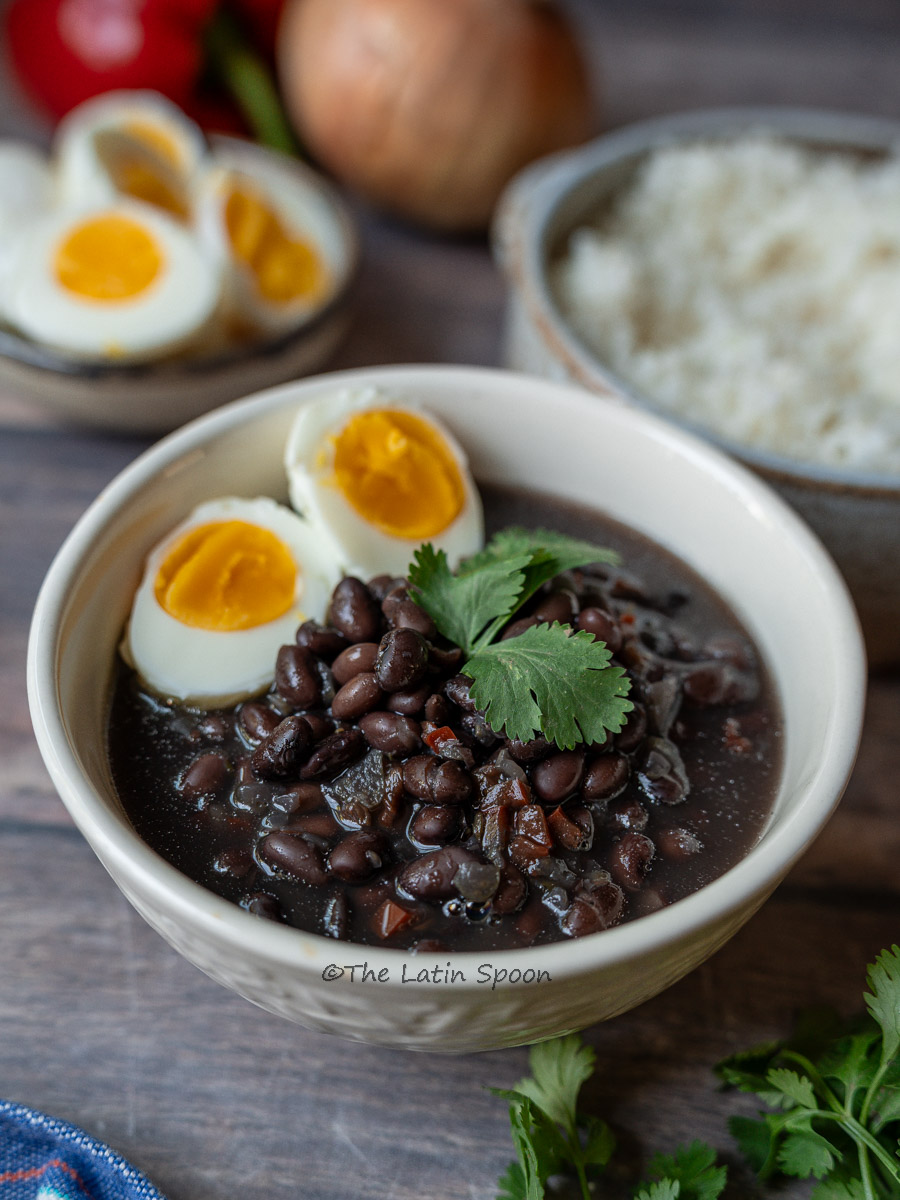
💡 Extra Tips for Cooking Black Beans – The Costa Rican Way
- Check your beans before buying: If you see little holes, they may have tiny bugs (in Costa Rica we call them gorgojos) that feed on dried beans, especially when the beans are too old.
- Fresh herbs over dried: If you can, always use fresh herbs instead of dried ones. But whichever you use, don’t be shy—add plenty of flavor, your beans will thank you for it.
- Cool completely before storing: Let your beans cool down fully before transferring them into a container with a lid. Never leave them uncovered in the fridge.
- Shelf life: Cooked beans will last up to 7 days in the refrigerator. The longer they stay chilled, the creamier they become.
- Freezing option: Cooked beans freeze beautifully. Store them in freezer-safe containers or bags in portions, and they’ll last up to 3 months. Just thaw and reheat with a splash of water.
Step-by-step photos to cook Black Beans
Cooking beans is pretty straightforward—you simply add all the ingredients to a pot, close the lid, and let them cook. But instead of just telling you, let me show you what that looks like in pictures.
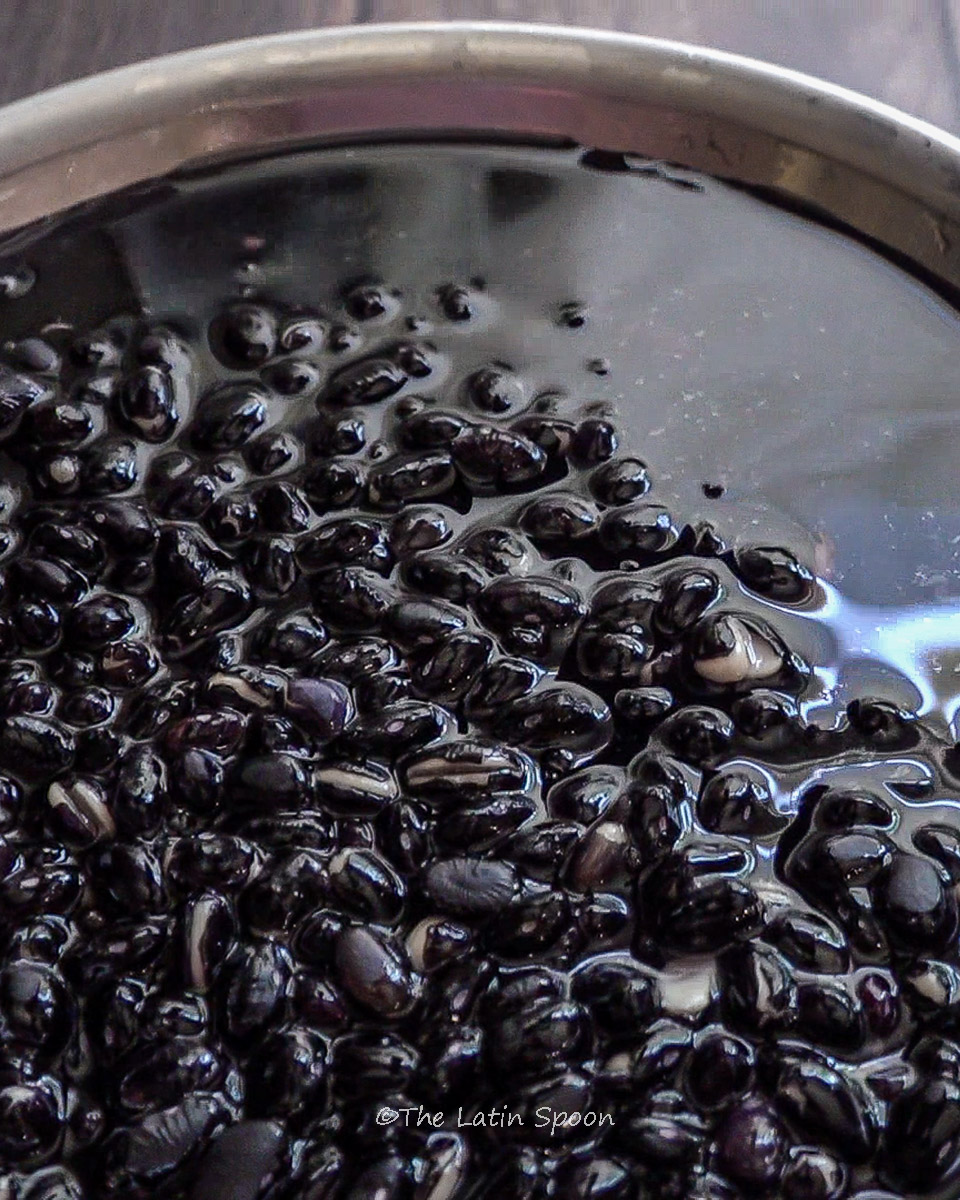
Step 1: Soak the beans.
Leave your beans soaking overnight in plenty of water. Soaking provides great benefits. The next day, drain the water and rinse the beans with fresh water until it runs clear.
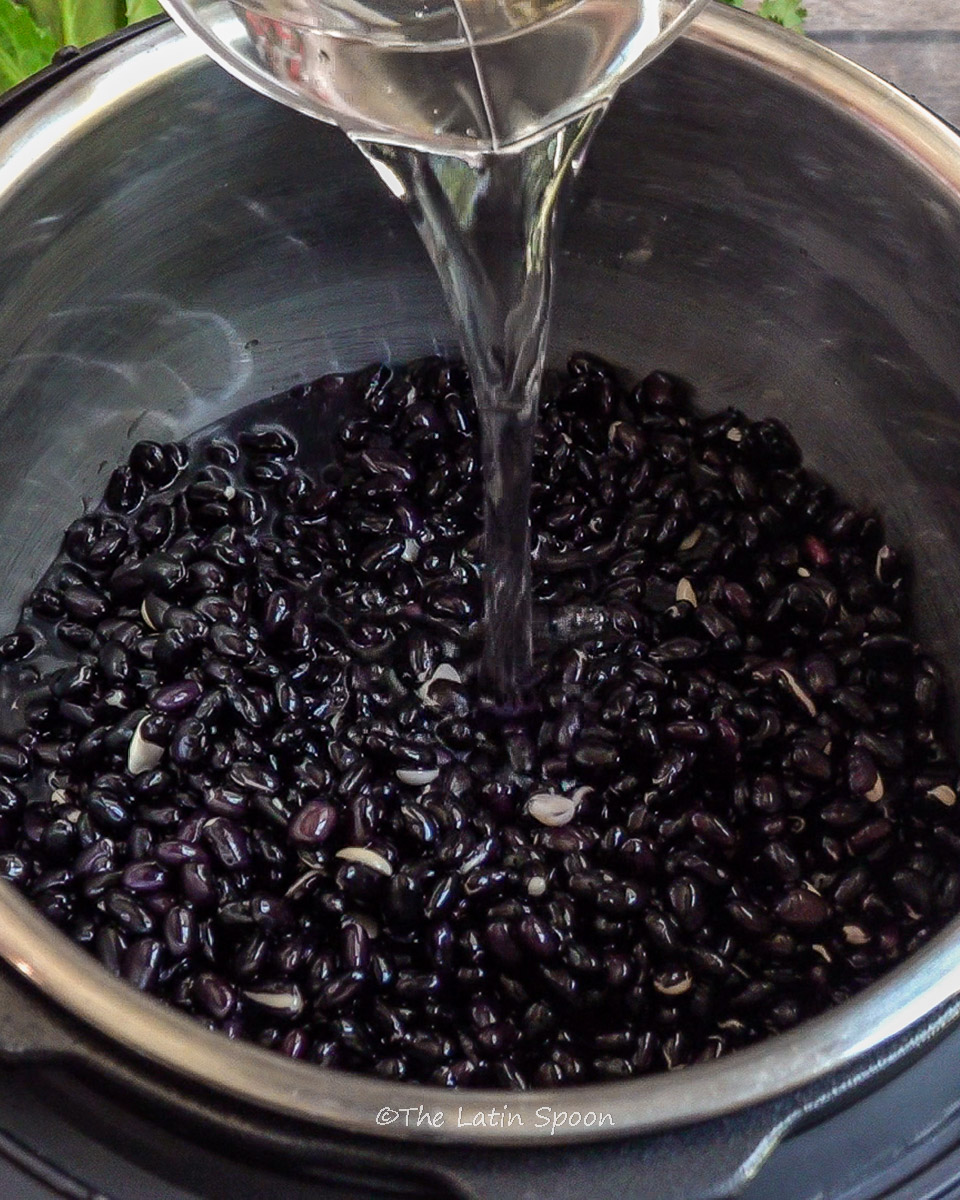
Step 2: Add to the pot.
Place the beans in the pot where you’ll cook them and add plenty of water. If you want to speed up the cooking process, add hot water.
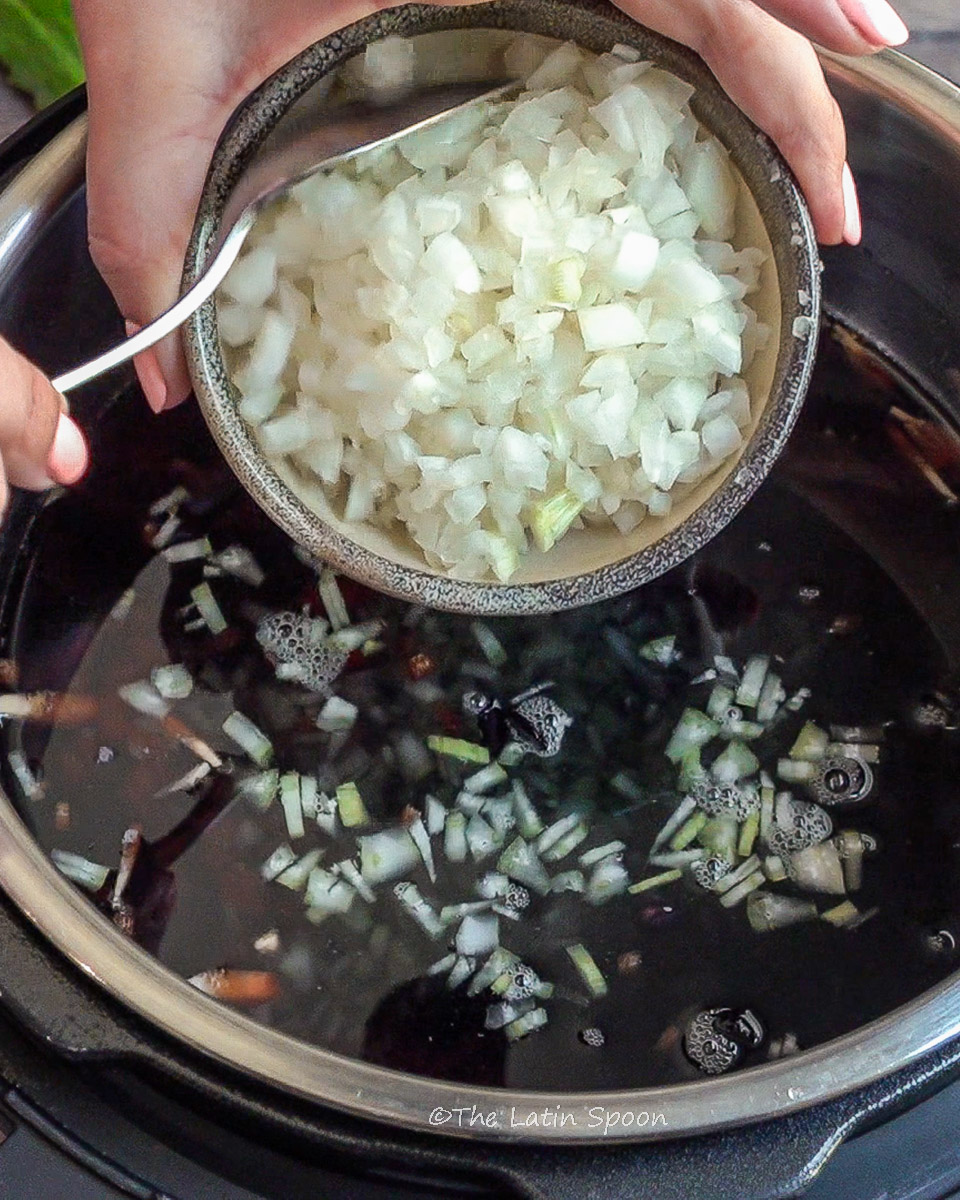
Step 3: Add veggies.
Add onion, celery, and bell peppers. You can chop them finely if you’d like to eat them with the beans, or add them whole for easy removal after cooking.
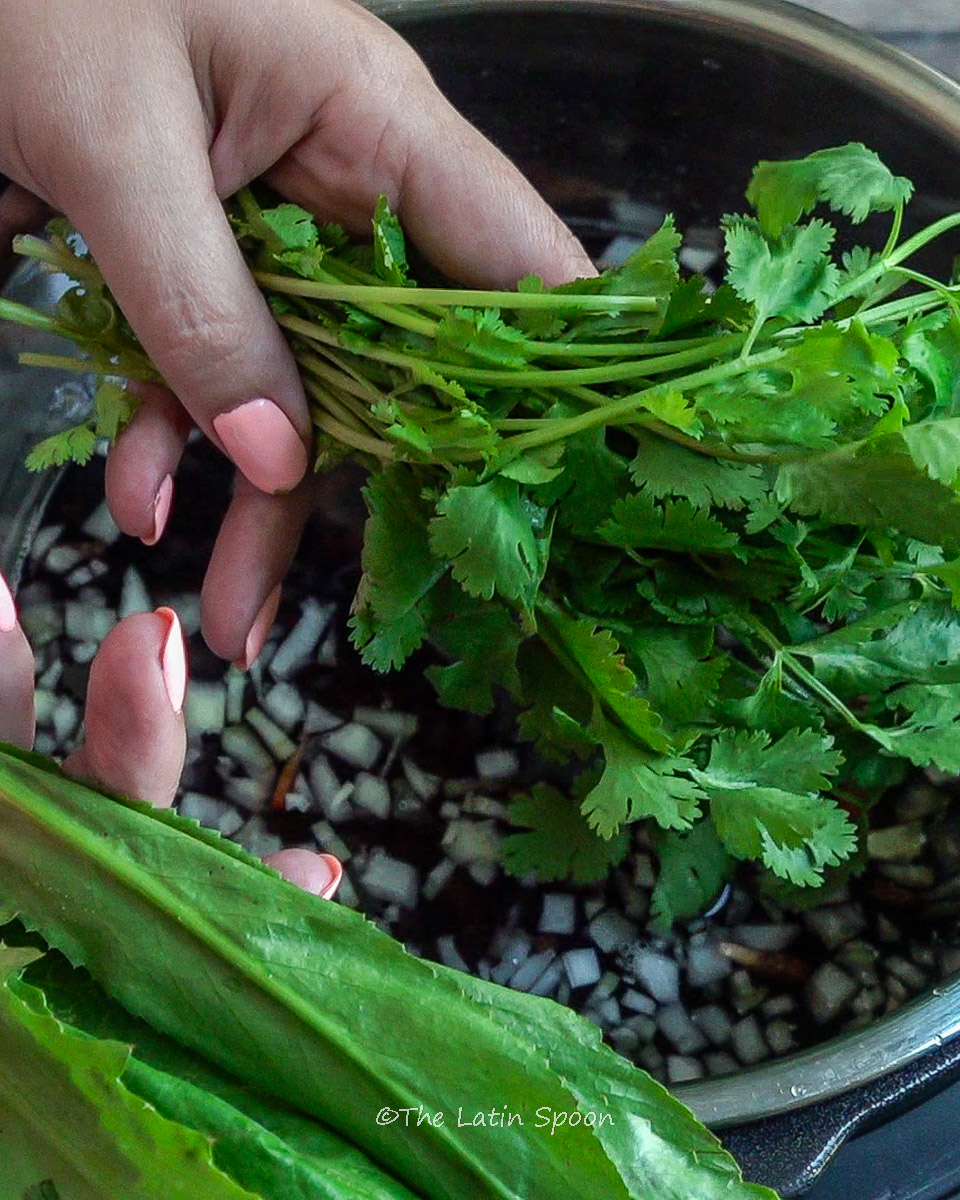
Step 4: Add herbs.
Toss in fresh herbs like cilantro or culantro. The more herbs and spices you use, the richer the flavor will be at the end.
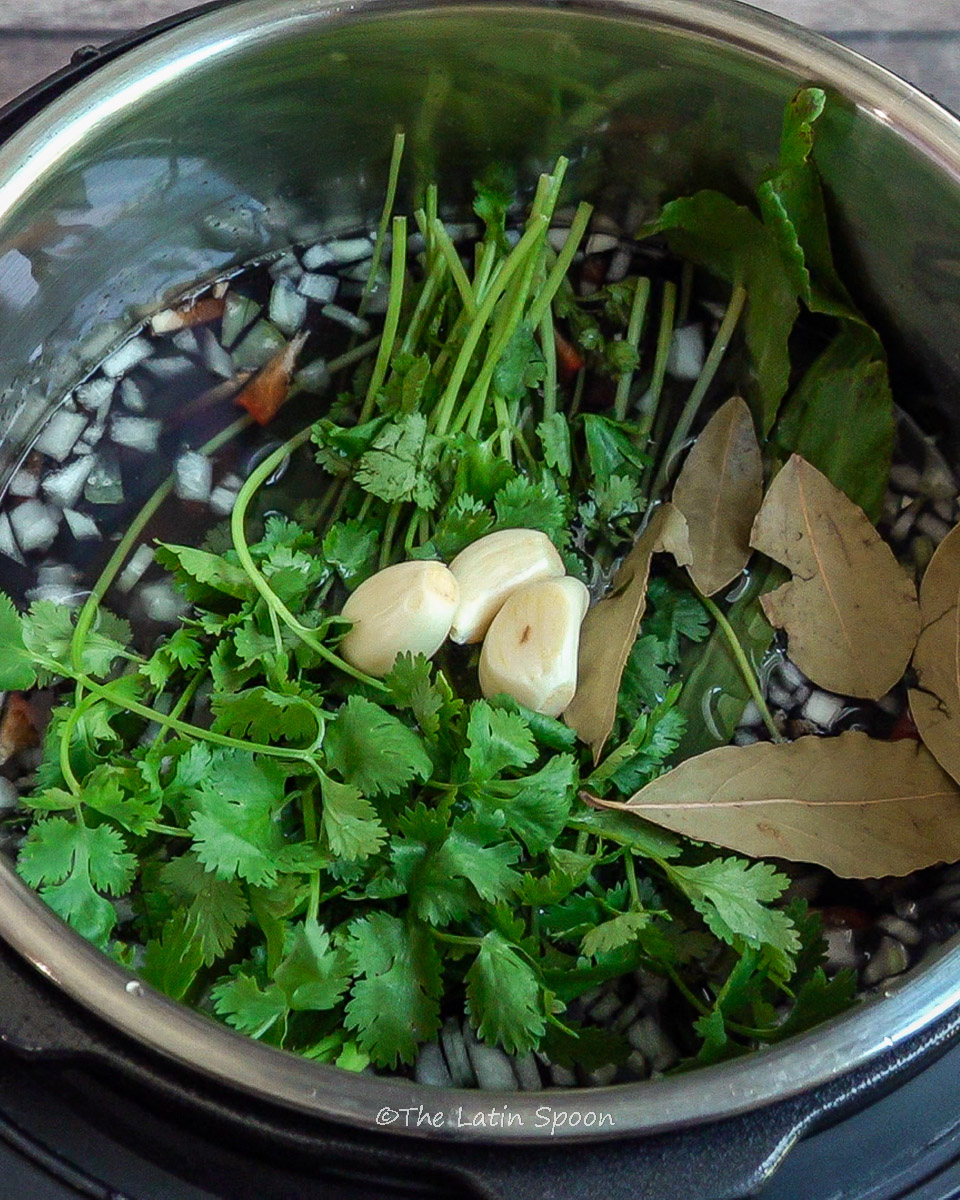
Step 5: Bay leaves and garlic.
Add bay leaves and garlic. Don’t be shy with the garlic—it brings amazing flavor to the beans.
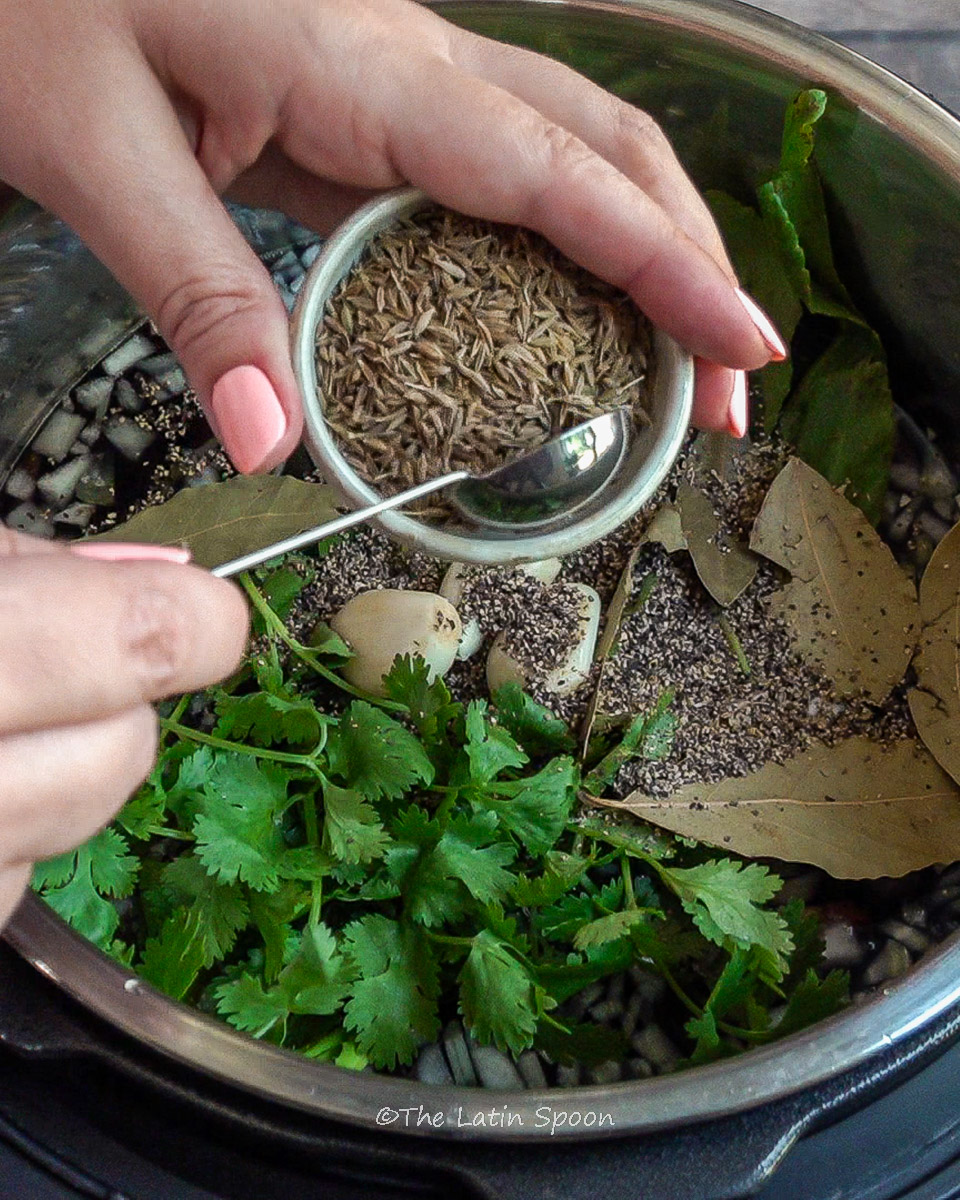
Step 6: Add spices.
Season with cumin seeds (or ground cumin), black pepper, oregano, and salt. If there’s another spice you love, go ahead and add it.

Step 5: Cook your beans.
Stir everything well, close with the lid, and set the timer. Cook for about 15 minutes if your beans were soaked. If not, double the cooking time.
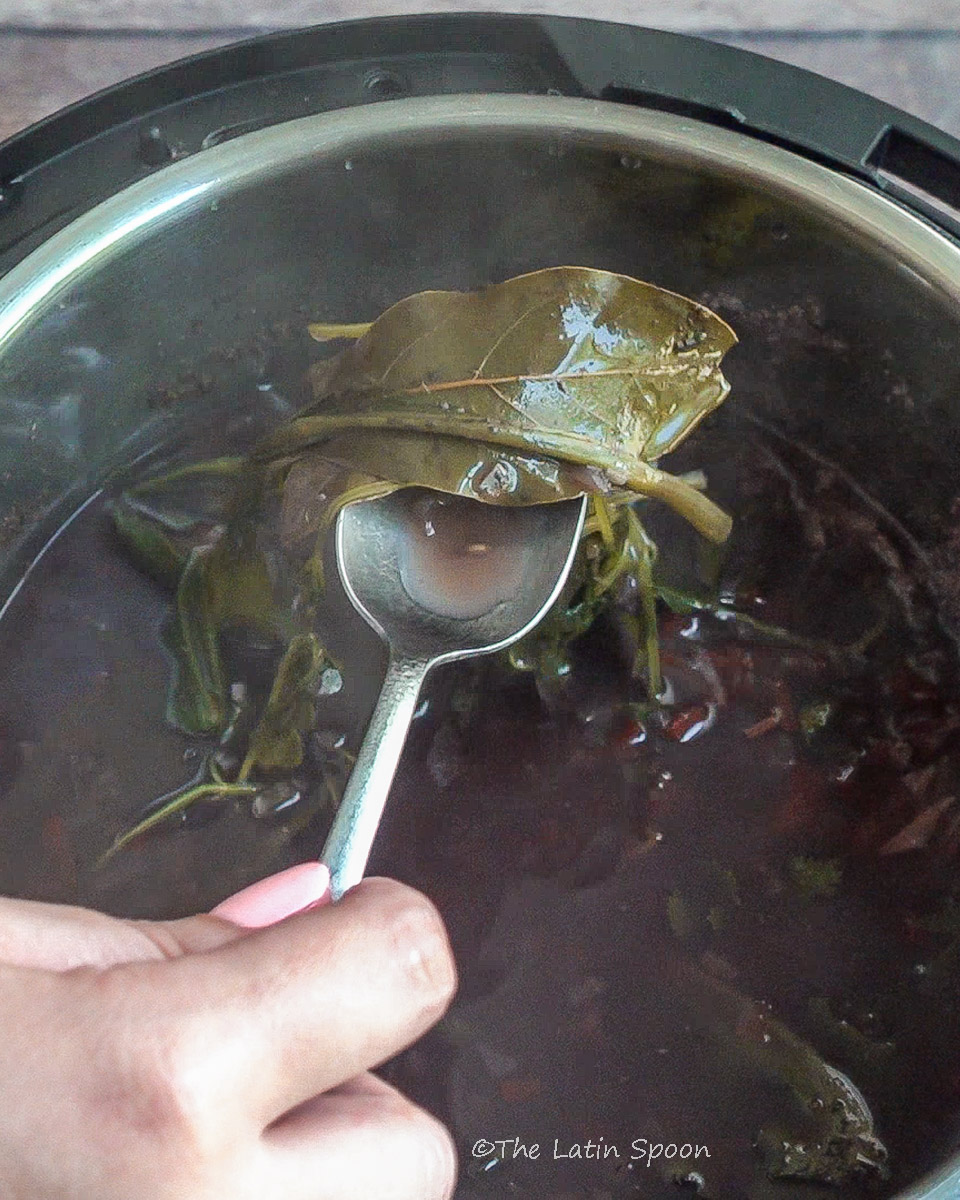
Step 6: Check and finish.
Once the beans are cooked, release the steam, open the lid, and remove herbs or bay leaves if desired. Taste to check for doneness and adjust seasoning to your liking.
💡 FAQs about Cooking Black Beans
No, you don’t need to soak your beans, but it really helps. Soaking can cut the cooking time in half and also makes the beans easier to digest. (No need to get too scientific here—just know your stomach will thank you!)
🌙 Overnight Soak (Traditional Method): Place the beans in a large bowl and cover with plenty of water—at least 3 times their volume, since they’ll expand. Let them soak for 8–12 hours or overnight. Drain and rinse with fresh water until it runs clear before cooking.
⚡ Quick Soak Method: Place the beans in a pot and cover with water. Bring to a boil for 2–3 minutes, then turn off the heat, cover, and let sit for 1 hour. Drain, rinse, and cook as usual.
👩🏻🍳 Personally, I’ve never tried the quick soak method myself, but I’ve seen my mom do it. It’s a handy quick fix—especially if you forgot to soak your beans overnight and want to enjoy them the same day.
If beans are soaked for too long, they can start to smell unpleasant, turn mushy or bland, or even sprout and ferment. If you’ve soaked them for more than a day, always check for mold or a sour smell—those are clear signs of spoilage.
Instant Pot: If you soaked them, about 15 minutes. If not, double the time.
Regular Pressure Cooker: If soaked, cook for 30–35 minutes, starting the count once the lid is closed and the stove is on. If not soaked, 45–60 minutes.
Regular Pot with Lid: If soaked, 1 hour to 1 hour 15 minutes. If not… well, it can feel like forever 😅—up to 3 hours.
If you keep them in an airtight container in the fridge, cooked beans can last up to 7 days.
There’s something tricky about homecooked beans—it’s hard to explain, but here’s what happens: if you take out just a small portion to reheat in the microwave, the beans left behind in the fridge sometimes spoil faster. To prevent this, bring all of your beans to a quick boil every 2–3 days. Add a little extra water if they’re drying out, and they’ll stay fresh longer.
🥭 Why make black beans at home when there are so many canned options?
Fair question! I’ve used canned beans before—they look so perfect it almost makes you wonder what’s going on with them. Not a single bean is cracked, they shine when you open the can, and they’re all evenly cooked.
But here’s the thing: flavor. Canned beans simply don’t have the same depth of taste. When you cook beans at home, especially the Costa Rican way, they soak up garlic, onions, herbs, and spices. The broth alone is rich, comforting, and full of character. Homemade beans may not “shine” like the ones in a can, but trust me—they taste like home.
So, if you decide to make fresh beans—the Costa Rican way—don’t forget to give my white rice recipe a try. The two pair beautifully together: so simple, yet so immensely delicious.
Besitos (kisses),
Mara
Black Beans Costa Rican Style
Equipment
- Pressure cooker/Instant Pot
- Cutting board and knife
Ingredients
- 2 cups dried black beans
- 7 cups water
- 1 cup diced onion
- 1 cup diced bell peppers
- 1 cup diced celery
- 3-5 garlic cloves
- 3-5 5 bay leaves
- 1 teaspoon black pepper
- ½ teaspoon cumin seeds
- 1 teaspoon dried oregano
- 2 teaspoons salt
Instructions
- Soak beans overnight in plenty of water. The next day, drain and rinse until the water runs clear.
- Add beans to a pot (Instant Pot, pressure cooker, or regular pot) and cover with water. Use hot water if you want to speed up the cooking process.
- Add onion, celery, and bell peppers. Chop them finely if you want to eat them with the beans, or leave them whole to remove later. 🧅
- Add fresh herbs such as cilantro and culantro. The more herbs and spices, the richer the flavor will be.
- Add bay leaves and garlic cloves. Don’t be shy with the garlic—it adds amazing flavor. 🧄
- Season with cumin (seeds or ground), black pepper, oregano, and salt. Adjust or add other spices you like.
- Stir everything well, close with the lid, and cook. → Instant Pot: 15 minutes if soaked, 30 if not. → Pressure cooker: 30–35 minutes if soaked, 45–50 if not. → Regular pot: 1–1h15 if soaked, up to 3 hours if not.
- Once cooked, release steam (if using pressure cooker/Instant Pot), open the lid, remove herbs and bay leaves if desired, taste, and adjust seasoning. 🌿
Video
Notes
- Soaking beans overnight helps reduce cooking time and makes them easier to digest, but it’s not mandatory.
- Add salt at the beginning so the beans absorb flavor while cooking.
- Cooked beans can be stored in the fridge for up to 7 days, or frozen for up to 3 months.
- Reheat by boiling gently with a little extra water if they dry out.

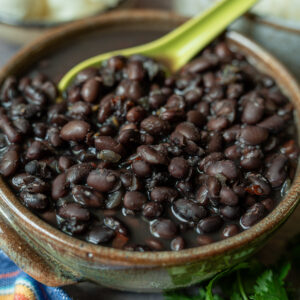
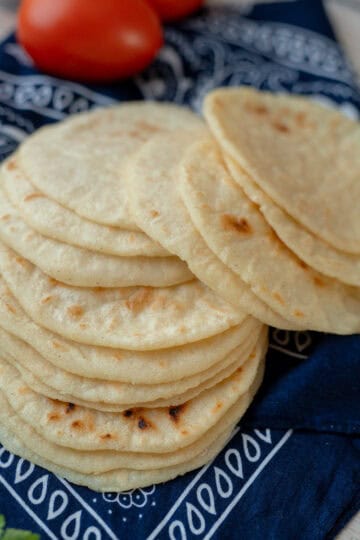


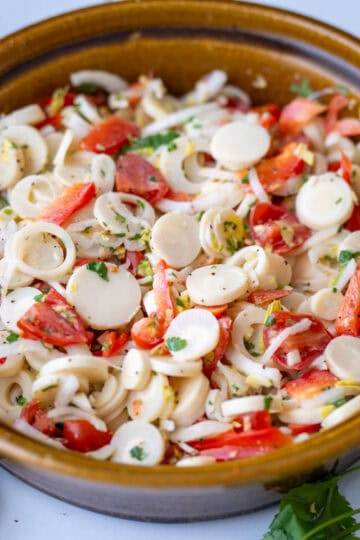
Leave a Reply